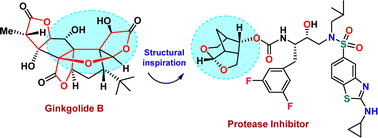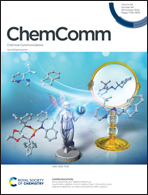Beyond darunavir: recent development of next generation HIV-1 protease inhibitors to combat drug resistance
Abstract
We report our recent development of a conceptually new generation of exceptionally potent non-peptidic HIV-1 protease inhibitors that displayed excellent pharmacological and drug-resistance profiles. Our X-ray structural studies of darunavir and other designed inhibitors from our laboratories led us to create a variety of inhibitors incorporating fused ring polycyclic ethers and aromatic heterocycles to promote hydrogen bonding interactions with the backbone atoms of HIV-1 protease as well as van der Waals interactions with residues in the S2 and S2′ subsites. We have also incorporated specific functionalities to enhance van der Waals interactions in the S1 and S1′ subsites. The combined effects of these structural templates are critical to the inhibitors’ exceptional potency and drug-like properties. We highlight here our molecular design strategies to promote backbone hydrogen bonding interactions to combat drug-resistance and specific design of polycyclic ether templates to mimic peptide-like bonds in the HIV-1 protease active site. Our medicinal chemistry and drug development efforts led to the development of new generation inhibitors significantly improved over darunavir and displaying unprecedented antiviral activity against multidrug-resistant HIV-1 variants.

- This article is part of the themed collection: 2022 CRSI Medal Winners Collection


 Please wait while we load your content...
Please wait while we load your content...